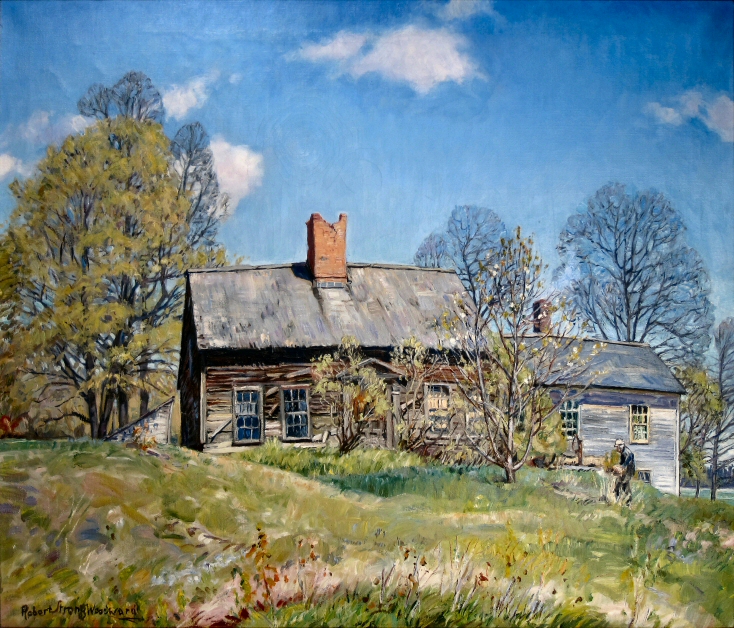Quick Reference
1938
Village Hill Road
Williamsburg, Mass.
Oil on Canvas
Landscape
Barns
25" x 30"
Williston Academy, '36, '37, '45
Southern Vermont AA, 1937
Mass. State College, 1938
Grand Central Galleries (NYC),1938
Bucks Hill (PA) AA, 1938
Gardner High School, 1938
Springville (UT) Art Association, '40
Berkshire Businessmen's AL, 1941
Ogunquit (ME) AA, 1941
Westfield Athenaeum, 1941
Grand Central Galleries (NYC),1943
Conway (MA) Town Hall, 1944
Home of Mr. & Mrs. Roger Smith, '44
NA
NA
Related Links
- See also the...
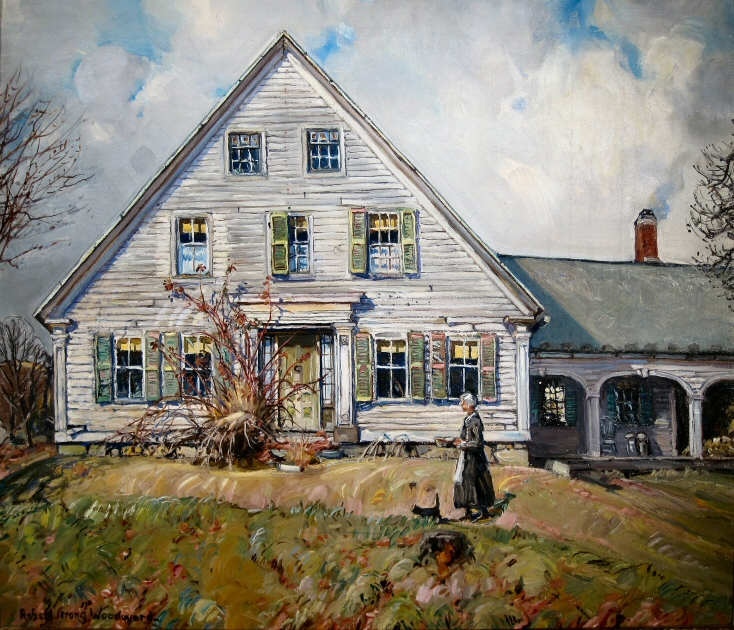 Houses Gallery to view related pieces.
Houses Gallery to view related pieces.
- See also the...
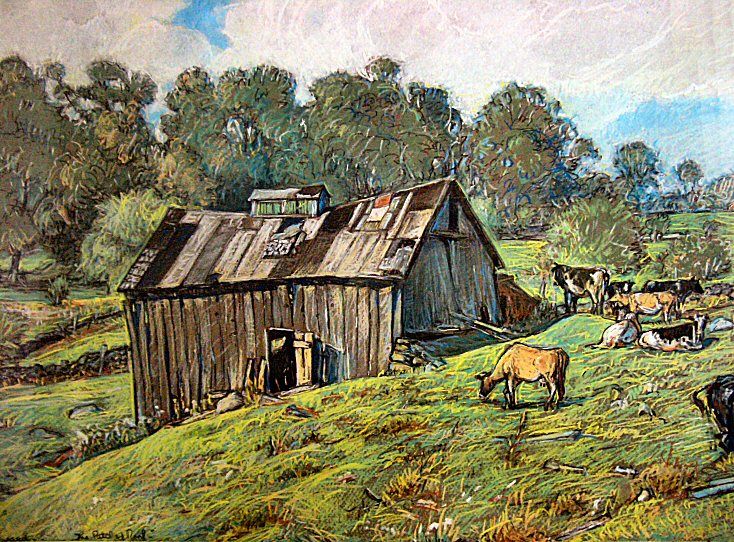 People & Livestock Gallery for related pieces.
People & Livestock Gallery for related pieces.
- See also At Lilac Time for another view of this house.
- See our page devoted to ...
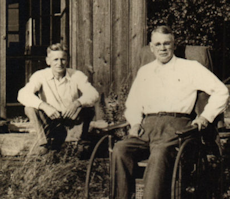 RSW friend, educator, and amateur photographer F. Earl Williams
RSW friend, educator, and amateur photographer F. Earl Williams
- See also End of the Road for another view of this house.
- See also the...
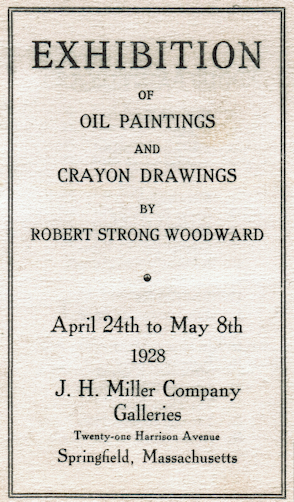 Exhibition List for a complete list
Exhibition List for a complete list
Featured Artwork: The Big Chimney
RSW's Diary Comments
"1938. A second painting of the rare old house over in Williamsburg, the same house as At Lilac Time only front view. Very huge old chimney, big maple in bloom at back. Figure of old man in front yard, approaching the house. One of my favorite and very "special" canvases (to my mind), largely exhibited with acclaim about the country but never purchased until in 1944, when it was bought by Mr. and Mrs. *********************Greenfield, Mass."
Comments on the back of a sepia print:
"Sold July 27. This is really the end of the photograph of ************ picture but is a duplicate, in general, of THE BIG CHIMNEY when cut off in this way. Found I didn"t have a glossy print of THE BIG CHIMNEY but thought this would do to jog your memory. Delicate blue sky with white clouds, pale yellow spring maples, weather-beaten old house with faded white ell, huge sunlit orange-red chimney. $450."
Editor's NOTE:
This painting was purchased from the 1944 Mr. & Mrs. Roger Smith Exhibition. A private exhibition of remarkable painting arranged by F. Earl Williams. Go to the bottom of this page for more...
Additional Notes
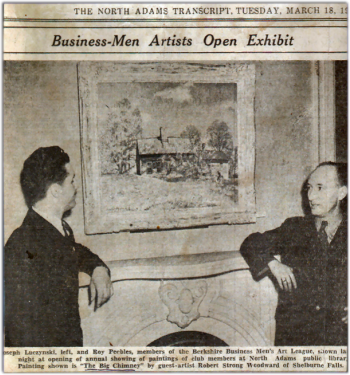
 March 18, 1941, North Adams Transcript
March 18, 1941, North Adams Transcript
featuring The Big Chimney
An old house owned by Mr. Loomer, was built in 1795 and still exists on Village Hill Road in Williamsburg, Mass.
To the left at the bottom of the clipping, the caption reads, "Joseph Luczynski and Roy Peebles, members of the Berkshire Business Men's Art League shown last night at opening of annual showing of paintings of club members at North Adam's public library. Painting shown is "The Big Chimney" by guest-artist Robert Strong Woodward of Shelburne Falls.
We believe this painting was truly one of Woodward's favorites but so was the historic home. It was the backdrop or featured subject of a number of paintings, specifically, The End of the Road and At Lilac Time. Woodward also sketched the home 3 times that we know of; Big Chimney #1, Big Chimney #2, and Big Chimney #3...
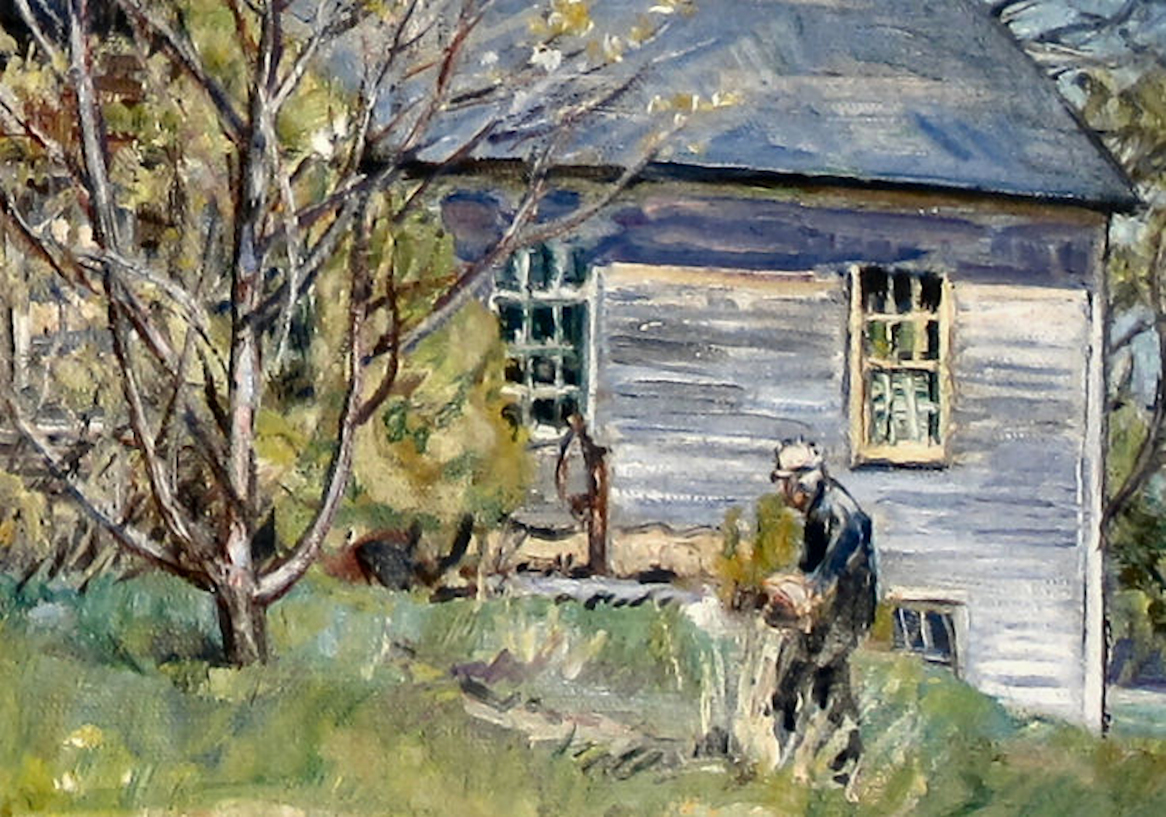
 A closer look at the elderly man
A closer look at the elderly man
... This painting does qualify as what we here at the website call an "editorial painting." It is a statement piece, in that it conveys a message Woodward used as a theme throughout the 1930s, starting in 1929 with, The Genial Old House continuing to 1937's Passing New England and this painting in 1938. What they all have in common is the choice of "home" that is featured. They are all, old, weathered by time and in some disrepair - the broken chimney in this painting; the missing roof shakes of Passing New England; and shutters in The Genial Old House. Each of these paintings also has people in them doing everyday things - the elderly man carrying something we can't identify across his front yard in this painting; the elderly woman holding a saucer as a cat trails her in The Genial Old House; and a man kicked back in a chair inside his garage in Passing New England. All of these paintings were widely exhibited and some throughout the country as if to clarify who he is... affirming, "this is my brand." They are all clearly statement pieces.
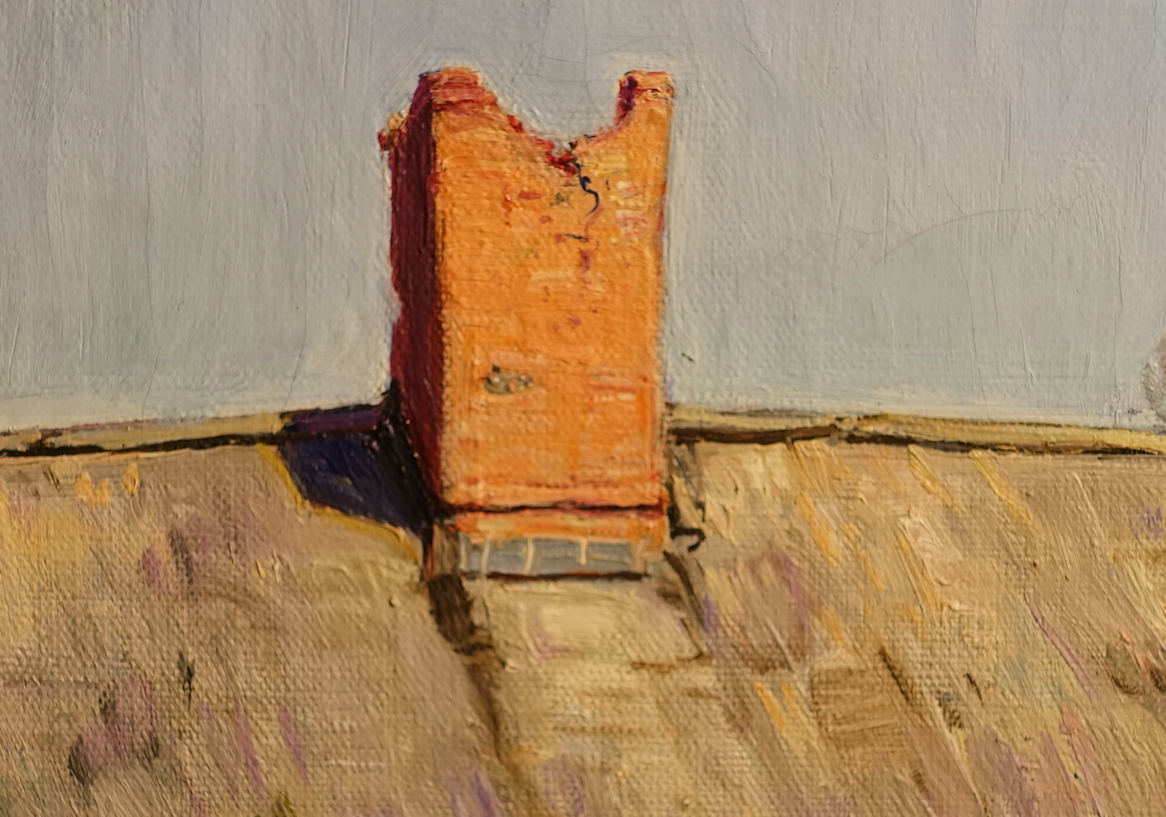
 The big chimney, a closer look
The big chimney, a closer look
What is the statement? It is a commentary on life but not in the way you might assume. Keep in mind these editorial pieces were all painted during the Great Depression. They all feature old weathered homes and people who have aged with them. They are all going about their business in a calm, quiet, and dignified manner. And this is the first (1) lesson about Woodward, he had a distinct way of conveying all of his subjects, no matter how despairing they may appear to the average viewer, with dignity. You do not feel sad for the people or homes. The second (2) lesson one must take from Woodward's editorial paintings is that they are not or ever meant to convey some lost "gothic." These are not pastoral, in the sense of a time gone by. Woodward in his own words had "no use for the past" or "convention." He was very much about the here and now. His message is one of life goes on... and so these editorial paintings pervade the idea of perseverance. No matter what life has dealt you, there is always the potential of maintaining a certain decorum of dignity and that, in and of itself is beautiful in all its imperfections.
The 1944 Mr. & Mrs. Roger Smith Exhibition:
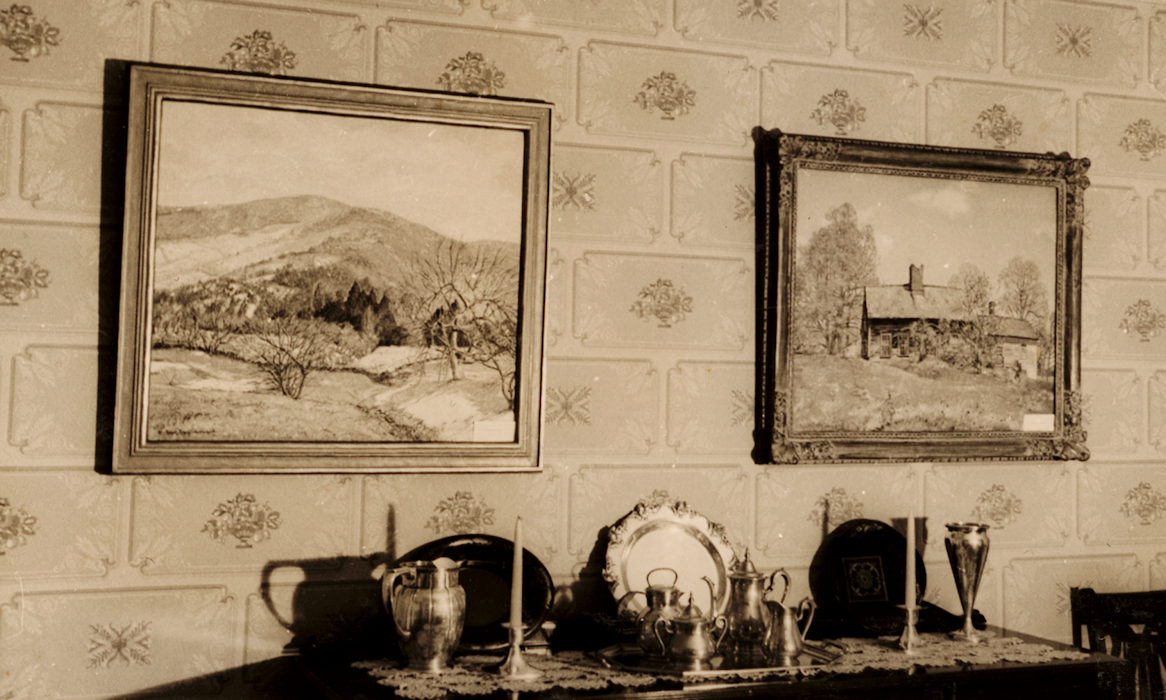
 Winter Song and The Big Chimney* hanging
Winter Song and The Big Chimney* hanging
in the home of Roger Smith for a private exhibition
 To the right: is a photograph of A Winter Song* and
The Big Chimney* hanging on the wall for a private exhibition in the home of Mr. & Mrs.
Roger Smith of Gardner, MA, December, 1944. The picture was taken by Woodward friend, educator, and amateur photographer
F. Earl Williams. Williams was once the principal of Gardner High School and so we believe he had something to do with
arranging this rare exhibition of Woodward's paintings in a private residence. The three missing photographs are New
England Impressions*, Winter Farms, and From the
North Window*. The paintings photographed are as follows in pairs: April Sun and
Frost on the Window, Portrait of a Shadow and
From a Mountain Farm, there is the chalk drawing The Road Home,
the oil A Winter Afternoon and other chalk Mountain Meadow
together and then Tranquility, and The Little Red Barn* as singles.
To the right: is a photograph of A Winter Song* and
The Big Chimney* hanging on the wall for a private exhibition in the home of Mr. & Mrs.
Roger Smith of Gardner, MA, December, 1944. The picture was taken by Woodward friend, educator, and amateur photographer
F. Earl Williams. Williams was once the principal of Gardner High School and so we believe he had something to do with
arranging this rare exhibition of Woodward's paintings in a private residence. The three missing photographs are New
England Impressions*, Winter Farms, and From the
North Window*. The paintings photographed are as follows in pairs: April Sun and
Frost on the Window, Portrait of a Shadow and
From a Mountain Farm, there is the chalk drawing The Road Home,
the oil A Winter Afternoon and other chalk Mountain Meadow
together and then Tranquility, and The Little Red Barn* as singles.
And what an exhibition! Worthy of any New York or Boston Gallery, it featured a number of Woodward's most exhibited editorial paintings going back as far as 1935 [noted by an
asterisk*] Two of the paintings hanging at the exhibit, A Winter Song and New England Impression previously hung at the 1939 Golden Gate
Exposition in San Francisco and the 1939 New York World's Fair respectively.

.png)

